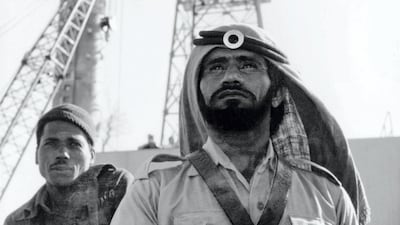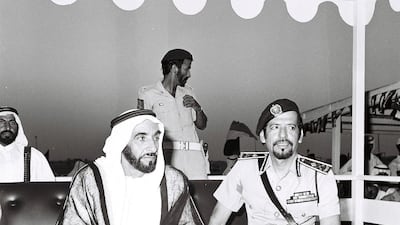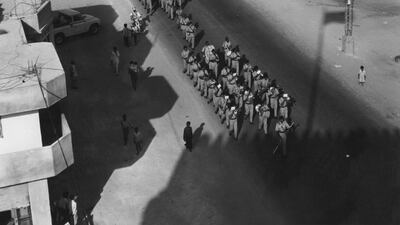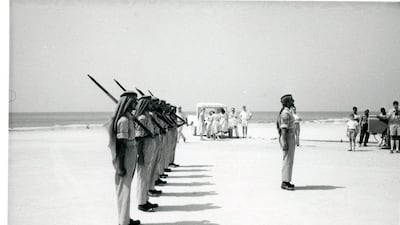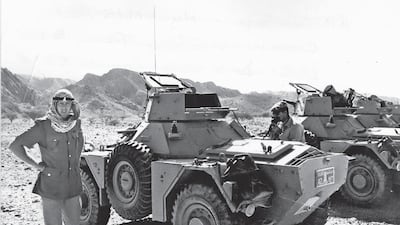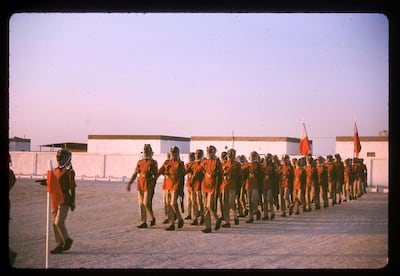There was not one metre of paved road in Abu Dhabi until at least 1960. Most of the houses were made from palm fronds, while the town's airport was a simple strip of sand. Yet only a decade later, the emirate was able to field a squadron of 12 Hunter jet attack aircraft to patrol its skies. "It was the most experienced squadron in the Middle East, if not the world," notes Dr Athol Yates, a lecturer at Khalifa University in Abu Dhabi. "That was an amazing achievement."
This rapid advancement is the subject of a book by Yates and author Cliff Lord. The Military and Police Forces of the Gulf States Volume 1: Trucial States and United Arab Emirates, 1951 to 1980 chronicles hard days in the desert, the role of grizzled foreign officers and how talented Emiratis took over from the late 1970s to forge a powerful army. "Probably no other country in the world has done this," says Yates. "Especially while it was transitioning to full independence."
The story begins with the Trucial Oman Levies. Formed in 1951 and later renamed the Trucial Oman Scouts, the British-led force calmed tribal disputes, protected the Trucial States' borders and helped to end the lingering practice of slave smuggling.
But then came change. In 1958, Abu Dhabi discovered vast quantities of oil under the seabed and a more direct hand in security was needed. Enter the Abu Dhabi Defence Force: the first ruler-controlled military in the Trucial States. The force was established in 1965 to protect the Maqta Causeway — the only crossing between Abu Dhabi island and the mainland — and guard the ruler. The scale of the force's expansion so alarmed the British that officials gave a warning in 1966 that it would create the "fashion for private armies which was feared would inevitably spread up the coast", the authors say.
The British later announced they would leave the Gulf in 1971, however, proving that the decision to establish such a force was correct. "It was now unlikely that strong, friendly forces would come to the aid of Abu Dhabi in the event of external aggression," the authors note in the book. "Secondly, the region would become more unpredictable."
Ras Al Khaimah, Dubai and Sharjah established their own forces within a few years because of security worries, with Iran invading two of RAK's islands, Greater and Lesser Tunb, in November 1971, a move in which a member of RAK Police was killed. Iran occupies the islands to this day.
This pattern of independent, disparate forces created its own problems. By the mid-1970s, six militaries and several police forces were operating independently across the country. On May 6, 1976, the UAE amalgamated them into the Armed Forces. Its headquarters were in Abu Dhabi, which stumped up most of the funds. This helped prevent people from switching to better-paid military jobs in other emirates, while the regional command structure was continued to allay concerns that any state would exercise undue influence. A testament to these efforts was when the UAE sent a contingent of peacekeeping troops to Lebanon by the end of the 1970s.
Police forces such as Abu Dhabi's also modernised during this time. "Stations were expanded, new equipment such as speed radars and CCTV were introduced and, for the first time, women served in the police," write the authors.
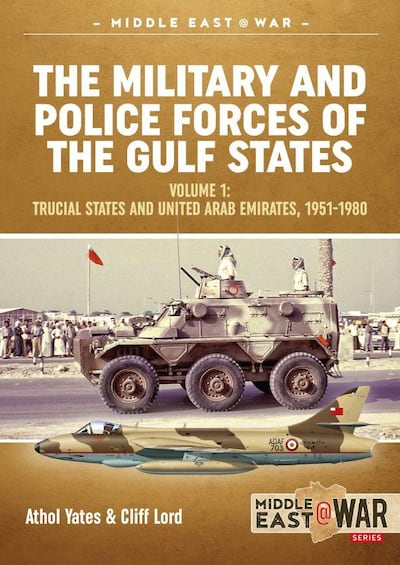
The late Sheikh Zayed bin Sultan Al Nahyan, the Founding Father, wanted a modern, highly skilled military equipped with fighter jets and missiles. To this end, the first Emirati officer training school opened in 1971, the first local pilot started flying in 1974 and then talented students started to rise through the ranks. Yet, a defining feature of the UAE’s forces in the early days was the presence of British, Jordanian and Pakistani officers who had been drafted in to help with training and knowledge transfer.
The book's narrative ends at the beginning of the 1980s. For Yates, the book is the result of about three years of research, scores of interviews with veterans and time spent digging up war memoirs. "Most people are going, 'Wow, we did not know any of this'," he explains. "It was extremely difficult to obtain reliable information. The Wikipedia page is wrong. There was historically not much interest in keeping records. So trying to weed through that was a challenge."
While the book's importance in terms of documenting this time for future records is undeniable, it will also be useful for Emirati students who for too long have had to rely on books that do not grasp the nuance of life here. "When I came here, textbooks were foreign and did not resonate with the students," adds Yates. "We would now like an Arabic version."
A version of this story was first published on May 6, 2019
